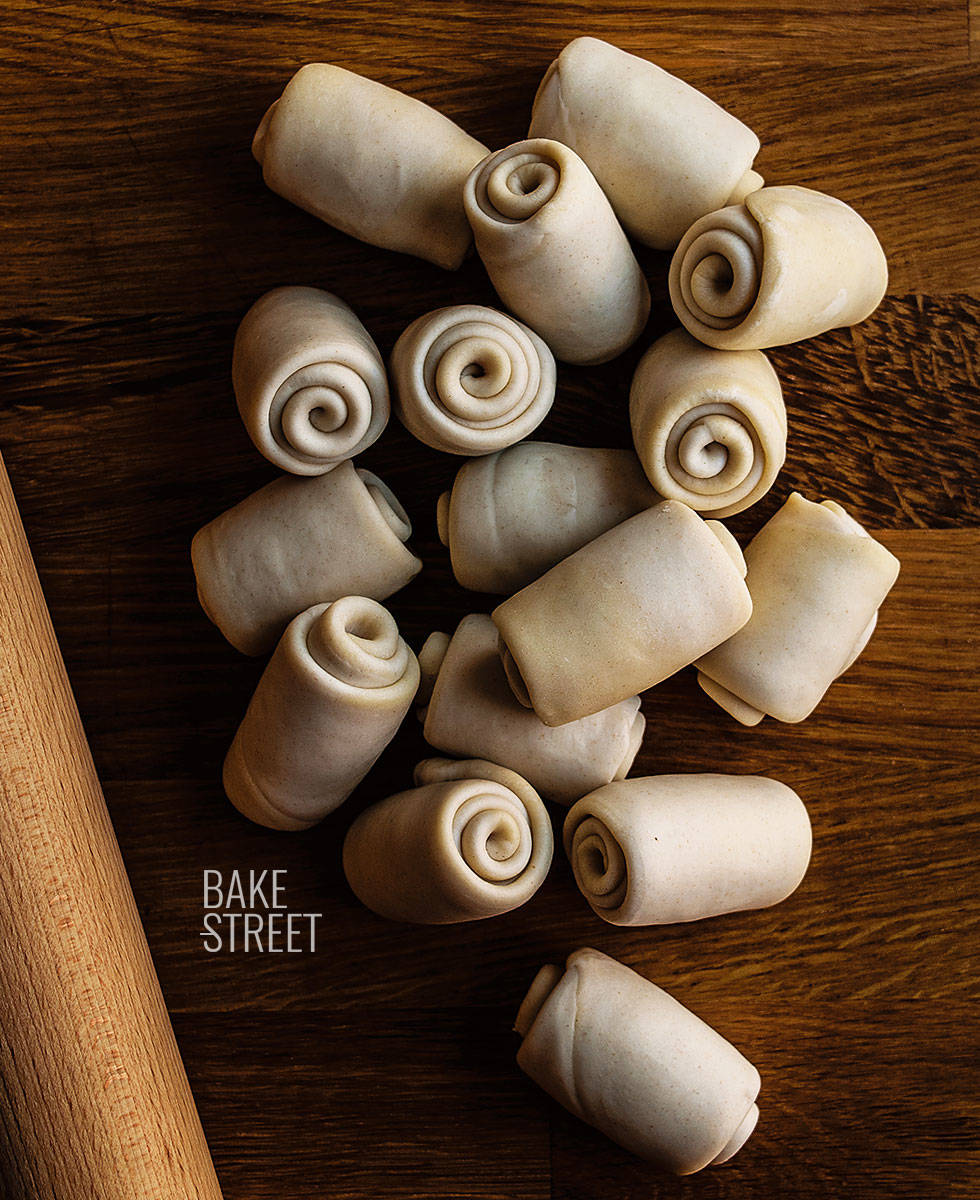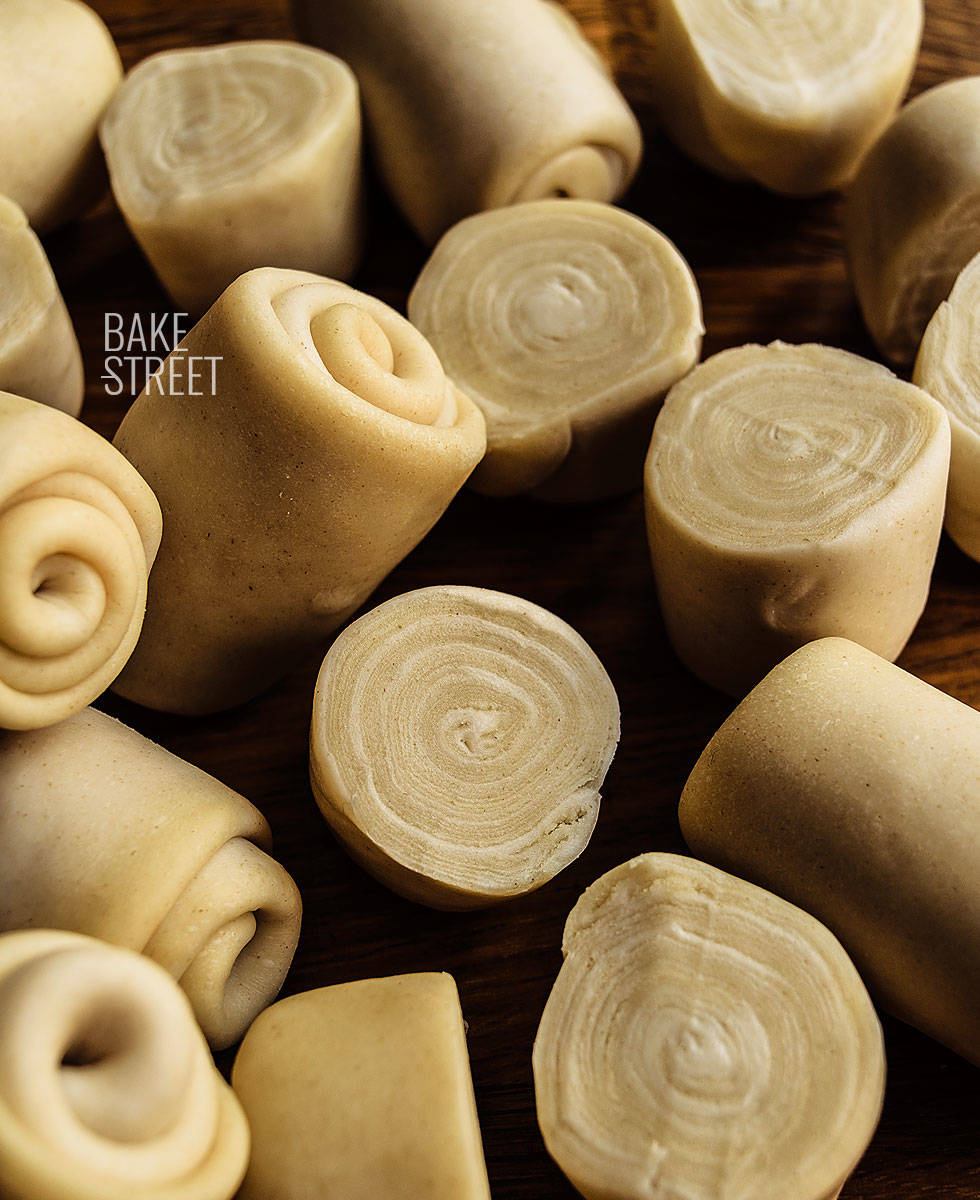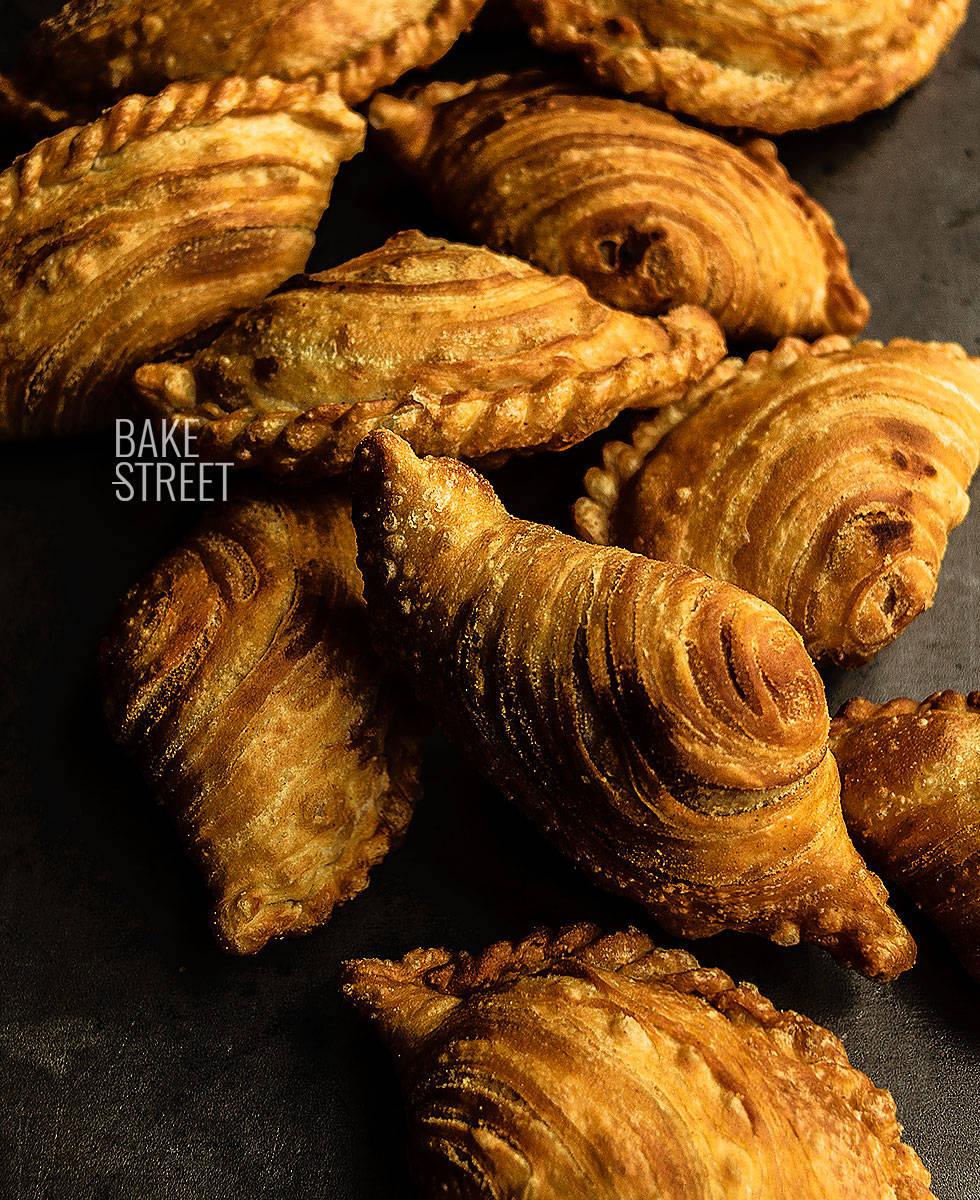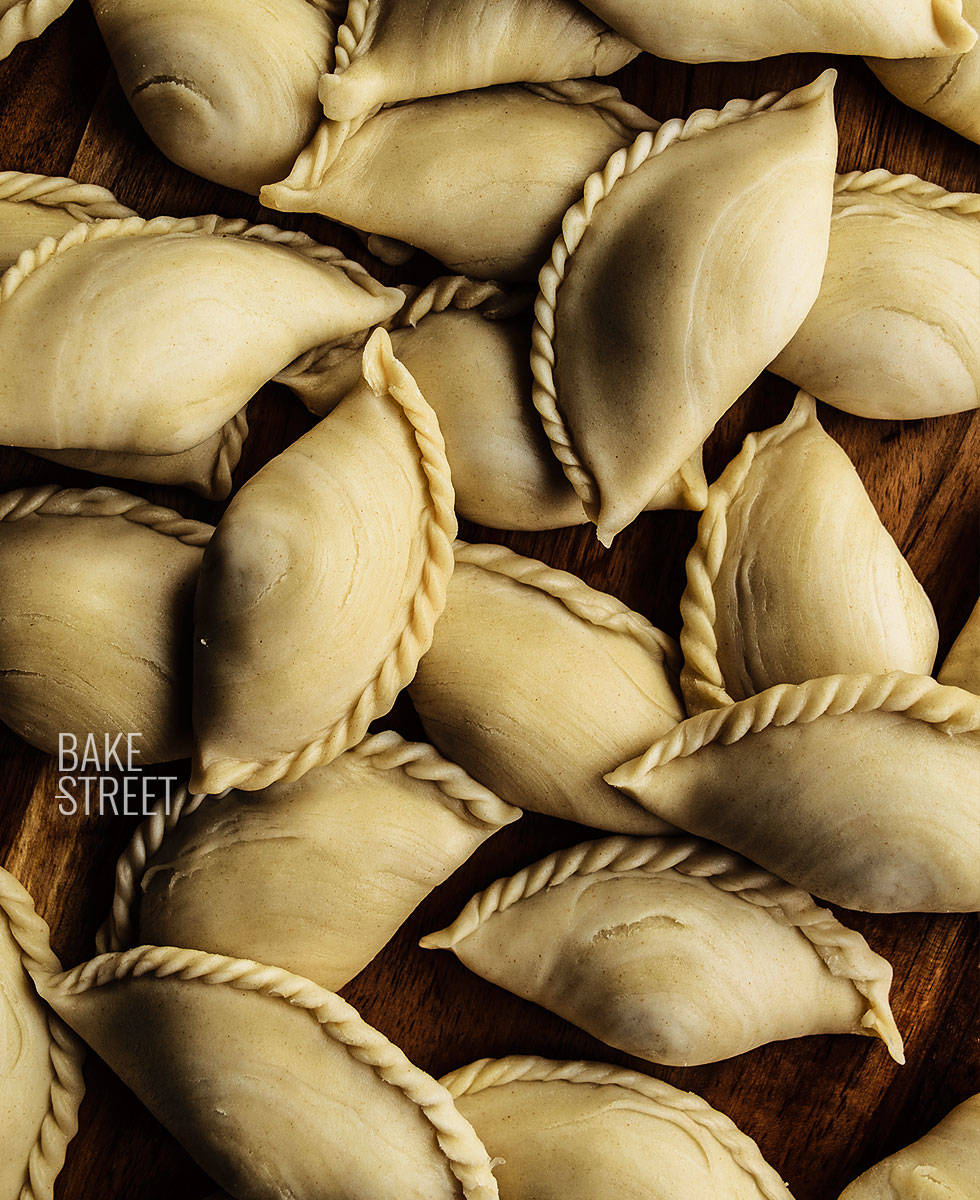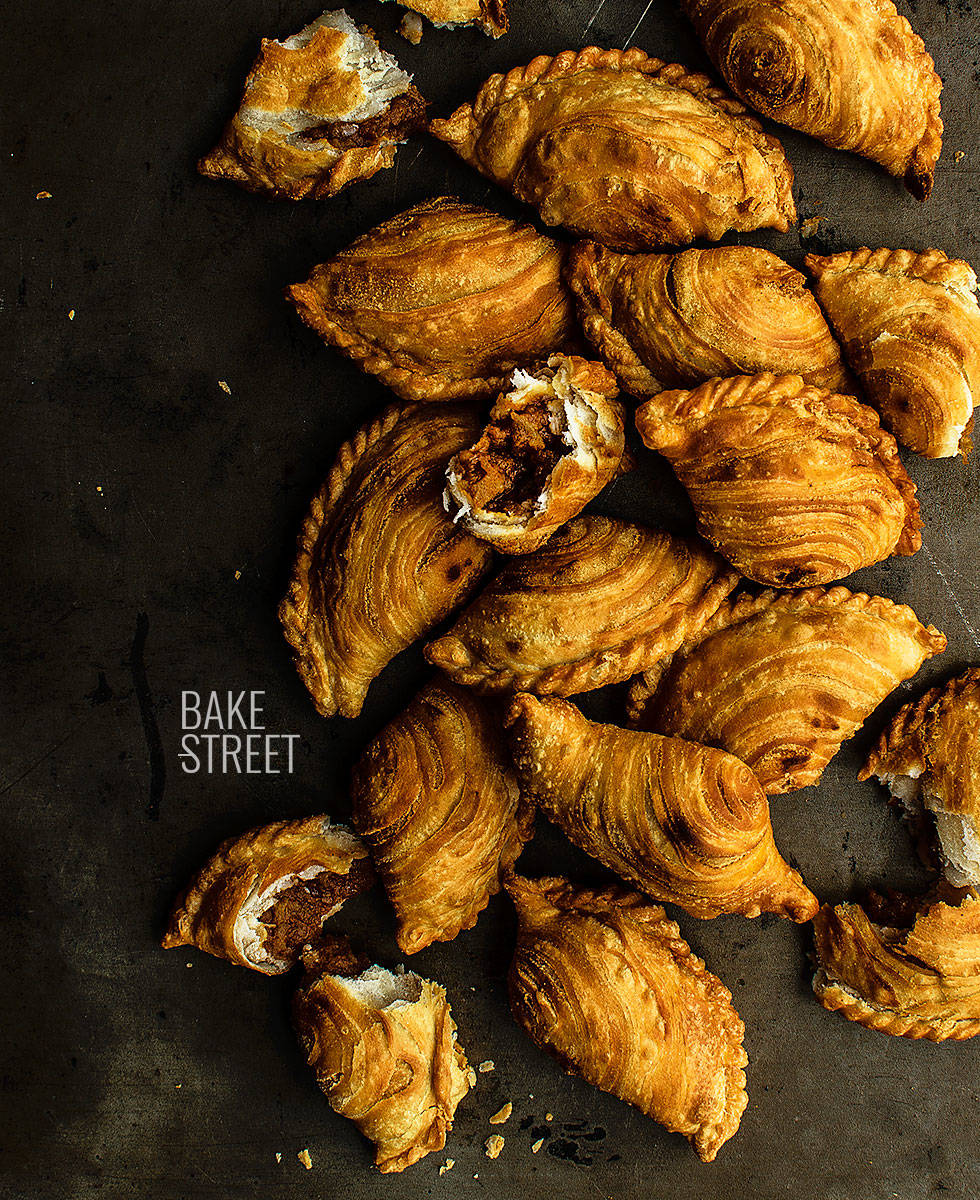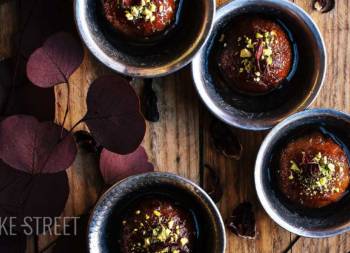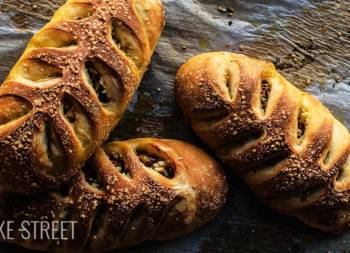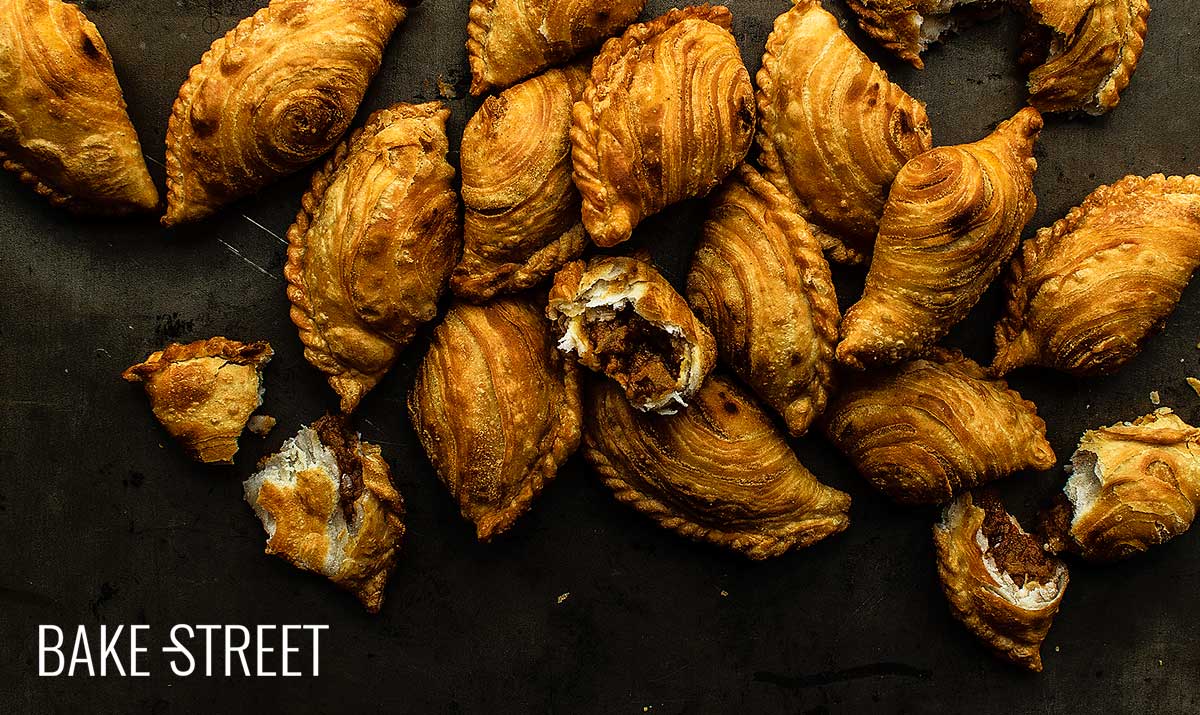
Karipap Pusing – Spiral Curry Puff
Today’s recipe I’ve wanted to make for a long time, but for one reason or another, I was always putting it off. A few days ago, a Youtube subscriber suggested the idea of making a video with this recipe. And, at that moment, I realized that the time had come to make it. Thank you so much Puremsoul M! Today I share with you a delicacy of Southeast Asian gastronomy, Karipap Pusing or spiral curry puff.
When we see them, they may look like simple pasties. On the one hand they are, but on the other they have nothing to do with it. Starting from the delicate and careful process to prepare the dough to the filling, so tasty and aromatic, that you can not stop eating them.

Karipap Pusing origin.
This elaboration is a traditional snack from Brunei, Malaysia (Karipap, epok-epok), Indonesia, Singapore (咖哩角,咖哩饺), Thailand (กะหรี่ปั๊บ) and India. It is a thin dough made with several layers simulating a puff pastry, which is then fried or baked, filled with a mixture of ingredients that varies depending on the place where it is made. But among them, curry is never missing. Its main ingredients are potato, curry and chicken, although we can find them made with many more ingredients such as sardines, egg and even yams.
It is believed that these small cakes have their origins in Cornish pasty, this variety is particularly associated with Cornwall, UK. They are pasties made with salty fillings, usually vegetables and meat (the most popular is beef, potatoes, onion and swede), arranged on a dough that folds and closes, sealing it into a curl.
Its appearance also reminds us of the traditional pasties typical of Spanish and Portuguese gastronomy.
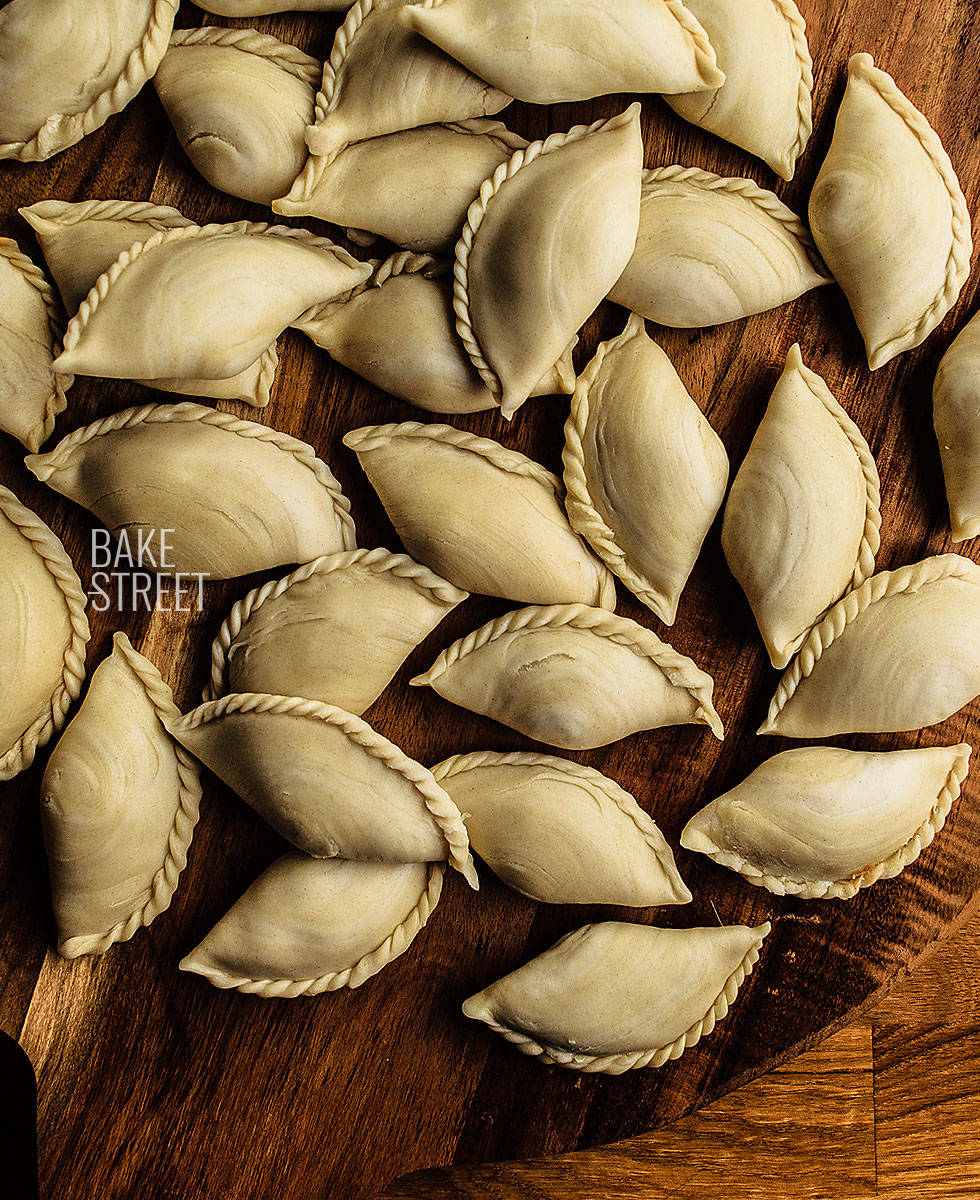
Tradition.
These salty curry cakes are very popular in Indian bakeries. In Malaysia you can find another version called epok-epok and they differ from karipap because the latter have layers that simulate a puff pastry dough.
They are usually filled with a potato paste and curry with half a boiled egg, canned sardines or even a vegan version that is not spicy and is made with radish, tofu, potato and carrot. They can be served with a sweet chili sauce. Their demand is so high that even some manufacturers have carried out frozen versions.
In Indonesia they are made with a very thin dough and a meat filling, usually chicken, mixed with vegetables, rice noodles and sometimes eggs. It is very common to find them in traditional markets. There is a similar version called panada that replaces the thin layer of dough with bread dough and is usually filled with cakalang (tuna).
In Singapore it is very common to sell these curry cakes. The most common is made with a slightly thicker, flacky dough filled with a mixture of Chinese and Indian style.
In Thailand this cake is usually made only with chicken, potato, onion and curry. It is said to be adapted from the Portuguese cake and arrived in Thailand from the hand of the Portuguese/Japanese/Bengali lady Maria Guyomar de Pinha, in the Ayutthaya period during the reign of King Narai. They are usually served in meetings with coffee or tea.
Ingredients for 44 pieces
Recipe adapted from Huang Kitchen
FOR WATER DOUGH:
- 12,35 oz (350 g) AP flour
- 7,4 oz (210 g) water
- 0,88 oz (25 g) unsalted butter, melted and cooled
- 1 tsp salt
FOR BUTTER DOUGH
- 9,35 oz (265 g) AP flour
- 5 oz (140 g) unsalted butter, melted and cooled
FOR THE FILLING:
- 17,6 oz (500 g) potatoes, peeled and cut into squares
- 2 large sweet onions
- 4 large garlic cloves
- 2-3 serrano chile, finely chopped
- 5 Tbsp olive oil
- 3 Tbsp red curry
- 18,9 oz (535 g) water
- 1 tsp sugar
- salt to taste
Instructions
THE EVENING BEFORE
Make the filling.
- Pour the oil into a large frying pan and place over medium heat.
- Add the onion, finely chopped, and cook until it has a semi-transparent texture.
- Incorporate the chopped garlic together with the chiles and cook for 5 minutes.
- Add the potato together with the curry and cook for 3-4 minutes.
- Pour in the water and add the sugar and salt. Cook at medium heat, stirring occasionally until the potato is completely tender and obtain a paste. It will take about 60-65 minutes.
- Remove from heat and let cool completely.
- Once it has cooled, store in an airtight container and refrigerate until the next day.
THE NEXT DAY
Make water dough.
- In a bowl add the flour together with the water, the melted butter and the salt. Mix with the hands to amalgamate the ingredients.
- Begin to work the mixture to obtain a, more or less, homogeneous dough.
- Transfer the dough to a clean work surface and start kneading.
- Knead until the gluten is well developed. The dough must be elastic and not cracked. It will take about 30-35 minutes.
- Once we have our dough perfectly developed, make a ball, cover with film and let it rest for 30 minutes.
Make butter dough.
- In a bowl add the flour together with the butter.
- Mix with a spatula until a medium homogeneous dough is obtained. If the dough is still too brittle, add a little more melted butter until you can amalgamate it completely.
- Start working with our hands until the dough is smooth and uniform.
- Cover with film and let rest.
Make the portions.
- Take the water dough and divide it into portions of0,9 oz (25 g) each. Make a ball and cover with film to prevent the surface from drying out.
- Divide the butter dough into portions of 0,53 oz (15 g) each. Make a ball and cover with film to prevent the surface from drying out.
- Let the pieces rest for 20 minutes.
Join the doughs.
- Take a portion of water dough and stretch with a roller to form a disc.
- Place a portion of the butter dough in the center and wrap the water dough around it so that it is completely covered. Seal well, roll gently and set aside. Always remember to cover the dough when you are not handling it because it tends to dry out very easily.
- Repeat the process with the rest of the pieces.
- Let stand again for 20 minutes.
Make the first shaping.
- Place one of the pieces on a clean surface and stretch with the roller trying to give an elongated shape.
- Roll on itself, turn 90° and flatten gently.
- Stretch again, this time we will give a little more length, and then roll again on itself.
- Put aside, cover with film and repeat the process with the rest of the pieces.
- Let the dough stand for 30-40 minutes. This ensures that the dough relaxes and allows us to stretch it out without any problems.

Make the final shaping and fill.
- From each of the portions we have rolled up, we will have 2 pasties.
- Take one of the pieces and, with the help of a sharp knife, divide it into 2 equal parts.

- Cover with film the portion we're not going to work with right now.
- Flatten the piece gently and stretch with a roller to form a disc. We will try to give a thin thickness.
- Place a generous teaspoon of filling and close in the same way as with a pasty pie.
- Seal the joint well and make a ruffle to give it a more attractive finish. In the video you can see how to do it.
- Put aside and repeat with the rest of the pieces. You'll be entertained for a while ;)
Fry.
- Fill a small saucepan with sunflower oil, enough to cover the pasties, and place over medium heat.
- Wait until it reaches a temperature of 347º F (175ºC).
- Fry in batches of 2-3 pieces. Put it in the hot oil and wait for the pastry to float. At that point, flip around and wait for it to finish browning.
- Remove, drain well and place on a tray with absorbent paper.
- Repeat the process with the rest of the pieces or those that we are going to eat at this time.
- Serve immediately.

Notes
- When we prepare the water dough I recommend you add the water little by little. That way we can control the final hydration without exceeding it. The consistency of the dough should be easy to handle and pleasant to the touch. Remember that the final water to be added will depend on the absorption capacity of your flour.
- When making the butter dough, take note of the texture of the dough and do not leave it sandy, but rather compact it and obtain a smooth finish.

- Respect all the times of rest that I specify in the recipe. These help the gluten to relax and allow us to work with the dough without any resistance from the dough.
- In many fillings, in addition to everything we use, chicken or even sardines are added. So don't hesitate to use it if you are attracted to the idea. Or even vary with another type of filling.
- We must eat them on the same day we fry them. As time goes by, they lose their crunchy texture.
- They can be frozen in zip bags for several weeks.

These Karipap Pusing or spiral curry puff are more than recommended, we loved them. However, I recommend that on the day you decide to do them you have enough time to devote all the care and attention you need.
It's quite a bit, but I don't advise you to reduce the recipe as we can freeze it and take it out as we like. Since we're taking the time, it's best to make the most of it. Just like when we make croquettes, when we make them, the ideal is to prepare a lot of them and for more occasions.
I hope you try them and tell me how it went with them!
I wish you a wonderful weekend.
Big hugs and see you on Monday,
Eva
Sources: Wiki, MS Wikipedia
